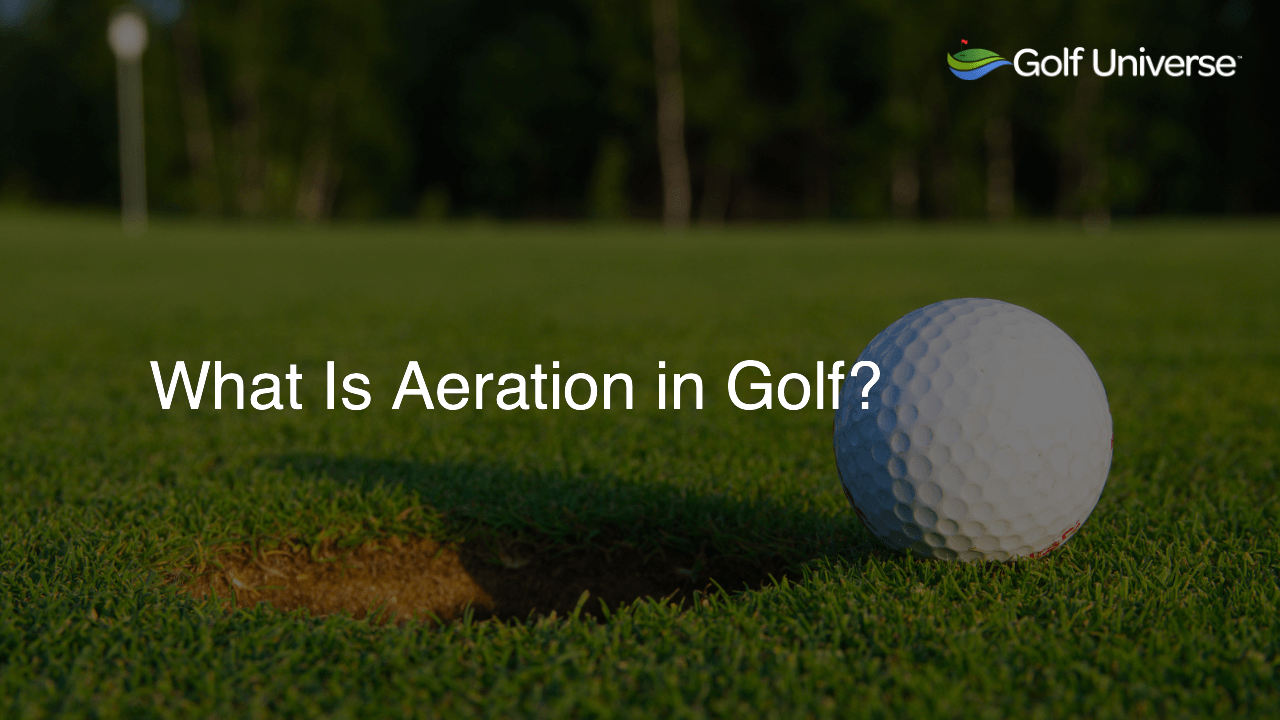Aeration in golf refers to the process of perforating the soil on greens, fairways, or tees to create small holes, which allows air, water, and nutrients to penetrate the grass roots. This helps alleviate soil compaction, improve turf health, and promote stronger and deeper root growth for a better playing surface.
Understanding Aeration in Golf
Aeration is a crucial maintenance process in golf courses, aiming to alleviate soil compaction, reduce thatch buildup, and create a healthier turf. As a golfer, it’s essential to know and appreciate the role aeration plays in providing optimal playing conditions.
Methods of Aeration
There are different methods of aeration used in golf courses, each designed to achieve specific results:
Core Aeration
Core aeration, also known as coring or plug aeration, involves removing small cores or plugs of soil and turf, leaving holes in the ground. This method is more aggressive and effective in relieving compaction and reducing thatch layers.
Solid-Tine Aeration
Solid-tine aeration uses solid, non-coring tines to create holes without removing cores. This method is less disruptive but less effective in reducing thatch.
Deep-Tine Aeration
Deep-tine aeration penetrates the soil deeper than the previous methods, reaching depths of 8-12 inches. This method helps in relieving deep compaction and encouraging root growth.
The Benefits of Aeration in Golf
Aeration brings numerous benefits to golf courses:
- Improves air exchange between the soil and atmosphere, promoting turf health.
- Enhances water infiltration and uptake by roots, reducing water runoff
- Strengthens roots, leading to a healthier, denser turf surface
- Reduces thatch buildup, which can lead to diseases and pest infestations
- Improves drainage and mitigates waterlogging, ensuring a playable surface
- Reduces compaction, providing better-growing conditions for the grass
Timing of Aeration
Timing is essential when it comes to aerating golf courses. The process should be scheduled during periods of active turf growth to aid in recovery. It’s also helpful to aerate when the soil is moist, as dry soil can be challenging to penetrate and may cause more stress to the turf.
Aeration Impact on Golfers
While aeration offers numerous benefits to golf courses, it may temporarily impact golfers’ playing experiences. Freshly aerated greens may be slightly bumpy, affecting ball rolls and increasing the difficulty of putting. However, these short-term inconveniences are a small price to pay for long-term improvements in turf quality and playing conditions.
The Role of Aeration in Course Maintenance
Proper course maintenance is key to the appeal and success of a golf course. Course managers and greenkeepers at Golf Universe understand the importance of balancing aeration’s benefits with the need to minimize disruptions to players’ experiences. Through careful planning, strategic timing, and efficient execution, aeration can be performed with minimal inconvenience to the golfer.
Aeration in Your Home Golf Course
At Golf Universe, a blog about golf, we take pride in not only informing golfers about the sport but also providing tips on how you can apply some of its principles in your backyard golf course. Aeration is useful in maintaining not only professional golf courses but also your home practice greens.
You can rent or purchase handheld aerators or shoe attachments that come with spike tines. Aerate your backyard greens once or twice a year during the active growing season, which will vary depending on your location and grass type. Using the correct timing and technique, you’ll soon notice enhanced turf quality and better playing conditions.
FAQ Section
Below are answers to some common questions you may have after reading this blog post about aeration in golf:
How often should a golf course be aerated?
Golf courses should be aerated 1-2 times per year on greens and tees, and every 2-4 years on fairways. The frequency depends on factors like soil type, compaction, weather conditions, and the intensity of play.
How long does it take for a golf course to recover from aeration?
Recovery times vary depending on factors such as turf type, weather, and the chosen aeration method. Typically, the healing process takes about 2-4 weeks, with noticeable improvements in playing conditions within 1-2 weeks following the procedure.
Will aeration affect the speed of greens?
Yes, aeration can temporarily affect the speed of greens, causing slower and bumpier ball rolls. However, these effects decrease as the turf recovers, eventually leading to smoother and more consistent greens.
Do golf courses close during aeration?
Golf courses may close or limit play during aeration to minimize disruptions to golfers and enable efficient completion of the process. Course management typically notifies patrons in advance about aeration schedules and any closures or alterations to play.
Is aeration necessary for all types of golf courses?
Yes, aeration is necessary for all types of golf courses. Regardless of the turf species, grass variety, or location, all courses experience soil compaction and thatch buildup. Aeration helps maintain healthy turf conditions and provide the best possible playing surfaces.











